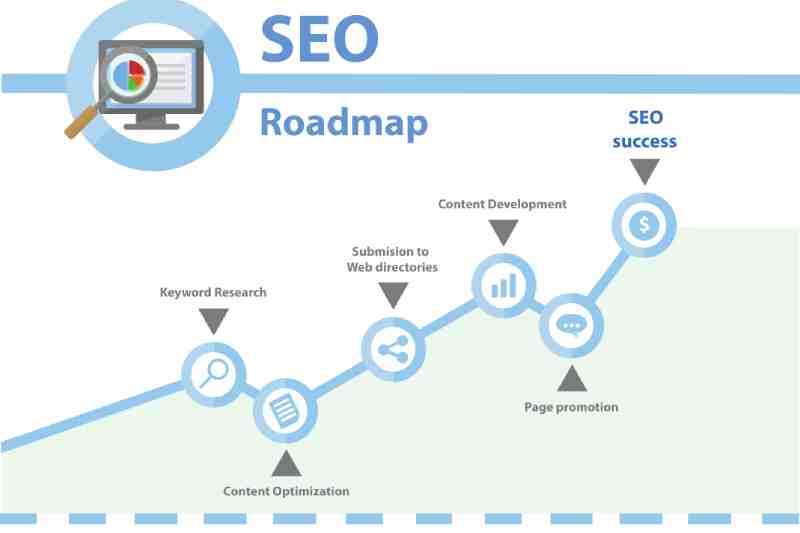You’re building a new website and want it to rank high in Google search results. If done well, Search Engine Optimization (SEO) can send thousands of targeted visitors to your website every month through organic search results. This is the process of improving your site’s visibility in search engines’ unpaid listings — the powerful traffic source that requires strategic effort rather than paid ad campaigns.
But the thought of SEO often overwhelms new site owners, especially when juggling countless tips and tools. That’s why this guide breaks the process into a manageable 30-day plan. Instead of complex theories or jargon, you’ll tackle actionable tasks that build a solid foundation for your website pages while preparing for long-term growth.
Let’s start with the crucial first steps: technical checks to implement within your opening week.
Week One: Establishing Your Technical and Tracking Foundation
It’s easy to overlook critical Search Engine Optimization (SEO) issues amidst website development chaos, such as misconfigured redirects or blocked resources. Therefore, it’s crucial to conduct a thorough audit before publishing content to identify and fix any potential crawlability problems.
Your monitoring toolkit requires two essential platforms: Google Search Console (GSC) focuses purely on Google search performance, while Google Analytics (GA) reveals broader user behavior and traffic patterns. GSC helps diagnose indexing errors and keyword impressions, whereas GA tracks user journeys across all acquisition channels. Together, these tools provide essential tracking and measurements for your technical SEO dashboard.
After the initial setup, implement these fundamental checks:
- Activate Your SSL Certificate: Validate that your site is served over HTTPS to establish site security. A modern website should never launch without this encryption, often called the “green-lock authentication.”
- Optimize for Mobile Friendliness: With mobile generating over half of all web traffic, confirm your site’s responsive design using Google’s free Mobile-Friendly Test.
- Verify Domain and Submit Sitemap: Set up and verify your domain ownership in Google Search Console. Afterwards, submit your XML sitemap through GSC to provide search engines with a clear map of all your website’s pages.
These steps form the technical foundation that allows Google to properly catalog your site while ensuring a secure user experience. Many website platforms simplify this process by offering automated SSL certificates and plugins for easy GSC and GA code insertion.
With these core technical components established, we will shift focus in Week Two toward optimizing individual pages through strategic keyword implementation.
Weeks Two and Three: Building Your Content and On-Page Strategy
Your SEO journey begins with keyword research—identifying the exact phrases your audience uses to find businesses like yours. Imagine thousands typing questions into search engines daily; your goal is to match these queries to content that answers their needs. Let’s decode this process step by step.
Search engines prioritize user needs above all, which is reflected in Google’s E-E-A-T framework (Expertise, Experience, Authority, and Trust). This is why search intent—the “why” behind every query—matters immensely. Think of it this way: someone searching “best budget laptops 2024” wants comparisons (informational intent), while a search for “buy gaming laptop under $1000” signals readiness to purchase (transactional intent). Your content must meet these intentions directly.

Essential On-Page SEO: Your Optimization Toolkit
After pinpointing your keywords and their corresponding intent, it’s time for on-page SEO. This is the practice of optimizing individual pages to rank higher. For a new site, focus on these four critical elements:
- Title Tag: This is the 50-60-character headline that appears in search results. It’s a primary ranking factor, so ensure your main keyword is included. A good title is descriptive, like “Professional Web Design Services for SMBs.”
- Meta Description: This 155-character summary acts as your ad copy in search results. While not a direct ranking factor, a compelling description with secondary keywords persuades users to click.
- H1 Heading: Your page’s main on-page headline should be wrapped in an H1 tag. It reinforces the topic for both users and search engines and should contain a variation of your primary keyword.
- Image Alt Text: This descriptive text helps search engines understand the content of an image and improves accessibility. Instead of “image1.jpg,” use descriptive alt text like “woman working on a laptop with a chart on the screen.”
Your internal linking strategy ties everything together. By linking related pages using descriptive anchor text—for instance, linking from a blog post to a service page with “explore our web design packages” instead of “click here”—you help search engines and users navigate your site’s structure and understand its topical relevance.
With these foundational on-page elements in place, you are now prepared for the next step: building off-site authority and credibility.
Also Read: Protecting Your Digital Presence with Website Security Essentials
Week Four: Kickstarting Your Off-Page Authority
With your on-page optimization in place, the focus shifts to building external credibility. This is Off-Page Search Engine Optimization (SEO)—the art of enhancing your site’s Authority and Trustworthiness using signals from across the web.
At the forefront are backlinks. These are links from other websites to yours, acting as “votes of confidence” that tell search engines your content is valuable and worth ranking.
For businesses serving a local audience, Local SEO is critical, and your Google Business Profile (GBP) is the cornerstone. Think of it as your digital shop window on Google Search and Maps. To optimize it, first ensure your business Name, physical Address, and Phone number (NAP) are consistent everywhere online. Inconsistencies create confusion and erode trust with search engines.
Next, actively seek customer reviews. Positive feedback is a powerful form of social proof that directly boosts your local rankings and builds trust with potential clients. Your 30-day launchpad should include three key off-page actions:
- Verify your GBP listing.
- Secure a foundational backlink from a key industry directory.
- Respond to your first few customer reviews.
With these reputation-building activities underway, the final step is to measure their impact. Next, we’ll cover the essential tools and metrics for tracking your SEO success.
Continuing Your SEO Journey Beyond the First Month
Every technical fix implemented and keyword optimized during these initial weeks builds pathways for sustainable growth; this structured foundation allows for strategic expansion without resource bottlenecks. Search Engine Optimization (SEO) demands persistence—this is why a long-term mindset proves essential, as a majority of marketing leaders report SEO improvements require several months to show measurable results.
Your next essential step? Regular monitoring through Google Search Console (GSC). Start by analyzing two critical metrics:
- Impressions: How often your pages appear in search results.
- Clicks: User-initiated visits triggered by those listings.
Auditing these metrics weekly provides actionable insights to refine your strategies, directly boosting website traffic potential. Therefore, for lasting success, treat Google Search Console (GSC) as your strategic advisor; each adjustment strengthens your site’s viability for future algorithm shifts.
So, if optimizing technical foundations while balancing content growth sounds overwhelming, proven methodology can transform that uncertainty into measurable outcomes and help sustain the growth seeded during these first thirty days.
If you’re a business owner in Massachusetts, getting started with professional SEO company in Lowell, MA can accelerate your results and ensure your website is built for long-term visibility.









Leave a Reply
You must be logged in to post a comment.